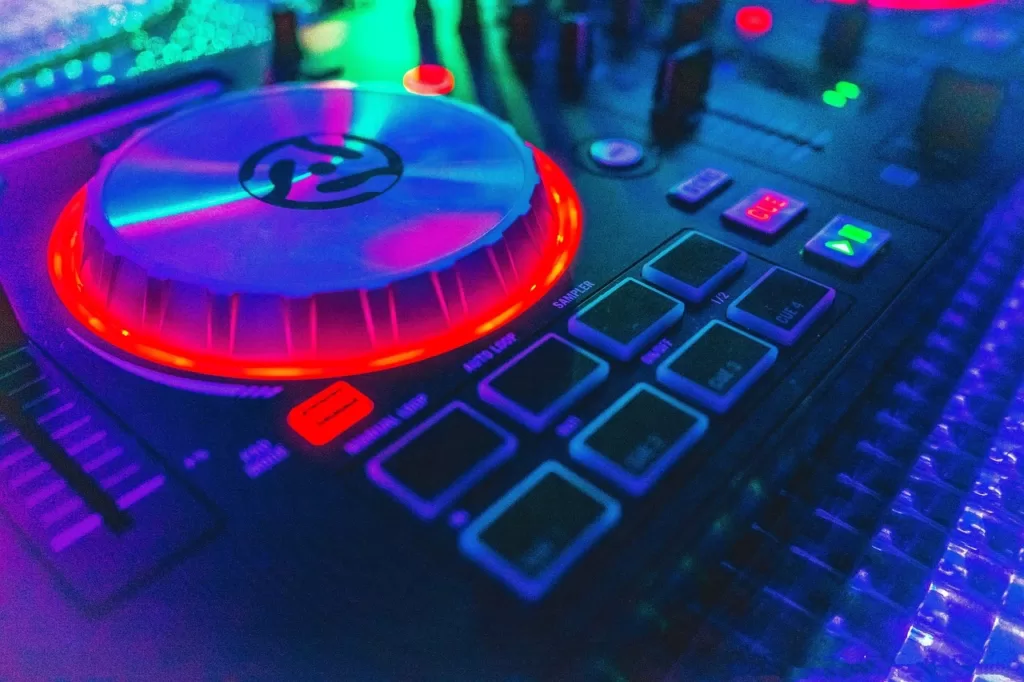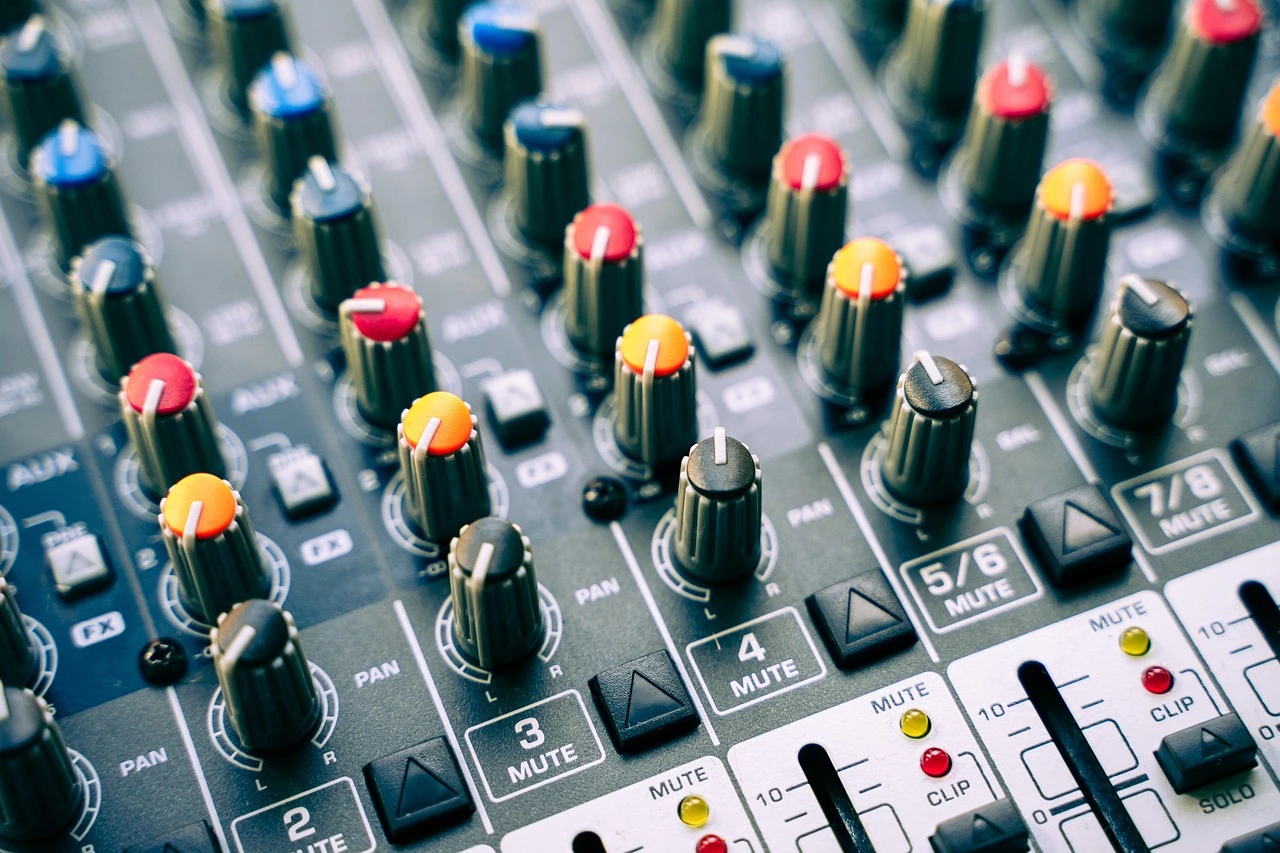Are you ready to embark on a journey that will transform your DJing skills and ignite the dancefloor? Get ready to dive into the electrifying world of DJ mixing, where seamless transitions and captivating energy are the keys to making your audience groove like never before. In this guide, we’ll delve into the core principles and techniques that will take your mixes to new heights. Let’s explore the thrilling landscape of DJ mixer techniques together.
Introduction: Welcome to the World of DJ Mixing
DJ mixing is the art of seamlessly blending tracks to create a continuous flow of music. It’s more than just playing songs; it’s about crafting an experience that captivates the audience and keeps them dancing. A DJ’s ability to transition smoothly between tracks is what sets them apart and defines their style.
Table of Contents
The Importance of Seamless Transitions
Picture this: the energy on the dancefloor is soaring, and the crowd is completely immersed in the music. Suddenly, there’s a jarring transition that disrupts the vibe. Seamless transitions are the secret sauce that maintains the energy and excitement throughout the set. The ability to move from one track to another without missing a beat is a skill every DJ must master.
Excitement of Keeping the Energy Flowing
Imagine being able to maintain a continuous flow of energy, keeping the dancefloor engaged and eager for what’s coming next. Seamless mixing allows you to build momentum, telling a musical story that unfolds with every track. It’s this sense of anticipation and release that keeps the audience hooked and creates a memorable experience.
Understanding Your DJ Mixer
At the heart of every DJ’s setup is the mixer, a powerful tool that empowers you to shape and manipulate the music. Understanding its components is essential for mastering seamless transitions.
Breakdown of the Mixer’s Components
A DJ mixer typically consists of knobs, faders, buttons, and other controls that govern various aspects of the sound. From volume and EQ to filters and effects, each element plays a crucial role in crafting your mix.
How Each Knob and Button Contributes to Your Mix
Every knob and button on the mixer serves a purpose. From adjusting the bass, midrange, and treble to controlling the tempo and effects, these controls allow you to customize the sound to your liking.
Finding the Perfect Balance for Your Style
The key to a successful mix is finding the right balance between tracks. It’s not just about matching beats; it’s about harmonizing melodies, energies, and emotions. This balance is what creates a seamless journey for your listeners.
Beat Matching Made Breezy
Beat matching is the foundation of smooth transitions. It involves synchronizing the beats of two tracks to ensure a seamless transition between them.
The Core Principle of Beat Matching
Beat matching relies on aligning the beats per minute (BPM) of two tracks. This can be done manually or with the help of technology, but using your ears is the mark of a skilled DJ.
Using Your Ears Over Relying on Technology
While technology can assist in beat matching, it’s crucial to train your ears to identify when tracks are in sync. This not only enhances your mixing skills but also prepares you for situations where technology may fail.
Tips to Sync Tracks Flawlessly
Practice makes perfect when it comes to beat matching. Experiment with different techniques, and don’t be afraid to adjust the pitch or tempo to achieve a seamless blend.
Crossfading: The Art of Smooth Blends
Crossfading is another vital technique that allows you to transition between tracks smoothly, creating a seamless overlap.
Exploring the Crossfader and Its Magic
The crossfader is a central tool for crossfading. It controls the volume balance between two tracks, enabling a gradual transition from one to the other.
Transition Techniques for Different Genres
Different genres demand different transition techniques. Experiment with short cuts, quick fades, and longer crossfades to discover what works best for each track.
Keeping the Vibe Alive During Switches
Maintaining the energy during transitions requires careful track selection and an understanding of the crowd’s preferences. Keep the excitement alive as you switch from one track to the next.
EQ Mastery for Seamless Soundscapes
Equalization (EQ) is a powerful tool that allows you to balance the frequencies of different tracks for a harmonious mix.
The Power of Equalization in Transitions
EQ helps prevent clashes between tracks by adjusting the lows, mids, and highs. It enhances the overall sound quality and creates a polished mix.

Image by Thomas Rüdesheim from Pixabay
Adjusting Lows, Mids, and Highs for a Polished Mix
Tweak the EQ settings to highlight the strengths of each track and create a cohesive sound. Eliminate frequency clashes that could disrupt the seamless flow.
Preventing Clashes and Enhancing Flow
EQ can be used strategically to prevent clashes between tracks with overlapping frequencies. This ensures a smooth and enjoyable listening experience.
Creative Transition Techniques
Elevate your mixes by incorporating creative techniques like looping, scratching, and effects.
Looping, Scratching, and Effects for a Unique Touch
Looping a section of a track can add a layer of complexity to your mixes, while scratching introduces a dynamic and interactive element. Effects can transform the sound in unexpected ways.
Surprise Your Audience with Unexpected Twists
Incorporate surprising elements that catch the audience off guard. A well-timed effect or a sudden change in tempo can make your mixes unforgettable.
Elevating Your Mixes from Good to Unforgettable
Creativity knows no bounds in DJ mixing. Experiment with different techniques and let your unique style shine through. Elevate your mixes from good to unforgettable by pushing the boundaries of what’s possible.
Building Set Structure
Crafting a compelling set structure is essential for taking your audience on a musical journey.
Crafting a Journey Through Your Playlist
Start with tracks that set the mood and gradually increase the energy. Build up to climactic moments before easing the tempo down for a smooth landing.
Introducing Rising and Falling Energy Levels
Variation in energy levels keeps the audience engaged. Alternate between high-energy tracks and more subdued ones to create a dynamic mix.
Storytelling with Your Mixes
Use your mixes to tell a story that resonates with your audience. Take them on an emotional rollercoaster that reflects your musical vision.
Practice, Record, Improve
Becoming a skilled DJ requires consistent practice and a commitment to improvement.
The Significance of Practice Sessions
Dedicate time to honing your skills through regular practice sessions. Familiarize yourself with your equipment and explore new techniques.
Recording and Analyzing Your Mixes
Recording your mixes allows you to objectively assess your performance. Identify areas for improvement and fine-tune your skills over time.
Continuous Growth as a DJ Maestro
The journey of a DJ is one of continuous growth. Embrace challenges, stay open to learning, and watch as your mixing prowess evolves.
Conclusion: Embracing the Thrill of Seamless Transitions
Seamless mixing isn’t just about technical skill; it’s about creating an immersive experience for your audience.
Inspiring Your Audience to Hit the Dancefloor
As a DJ, you have the power to inspire people to let loose and dance. Your seamless mixes will be the soundtrack to unforgettable moments on the dancefloor.
Access Now: https://bit.ly/J_Umma
FAQs
1. Is beat matching only about aligning BPMs? Beat matching involves aligning BPMs, but it’s also about syncing phrases, energies, and musical elements for a seamless blend.
2. Can I use effects excessively in my mixes? While effects can add flair, use them judiciously to enhance the music without overpowering it.
3. How do I know which tracks to transition between? Understanding your tracks’ keys, energies, and moods will guide you in creating smooth transitions that make musical sense.
4. What’s the best way to practice beat matching? Start with tracks that have clear and steady beats, and practice aligning their rhythms by ear.
5. How do I handle mistakes during a live set? Mistakes happen to every DJ. Stay calm, improvise, and use creative techniques to recover and keep the dancefloor engaged.
Embrace the art of seamless transitions and let your mixes create magical moments that resonate with your audience. With dedication, practice, and a touch of creativity, you’ll master the techniques that make you a true DJ maestro. So, let the music play, and let the dancefloor come alive with your extraordinary mixes! 🎵🎉

